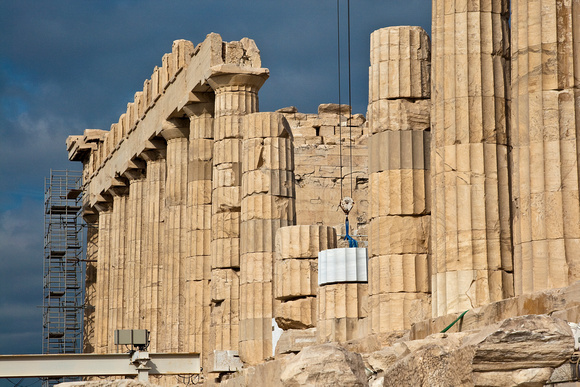Acropolis & Parthenon
The Parthenon It is the most important and characteristic monument of the ancient Greek civilization and still remains its international symbol. It was dedicated to Athena Parthenos (the Virgin), the patron goddess of Athens. It was built between 447 and 438 B.C. and its sculptural decoration was completed in 432 B.C. The construction of the monument was initiated by Perikles, the supervisor of the whole work was Pheidias, the famous Athenian sculptor, while Iktinos (or Ictinus) and Kallikrates (Callicrates) were the architects of the building. The temple is built in the Doric order and almost exclusively of Pentelic marble. It is peripteral, with eight columns on each of the narrow sides and seventeen columns on each of the long ones. The central part of the temple, called the cella, sheltered the famous chryselephantine cult statue of Athena, made by Pheidias. The rest of sculptural decoration, also by Phidias, were completed by 432 BC. The sculptural decoration of the Parthenon is a unique combination of the Doric metopes and triglyphs on the entablature, and the Ionic frieze on the walls of the cella. The metopes depict the Gigantomachy on the east side, the Amazonomachy on the west, the Centauromachy on the south, and scenes from the Trojan War on the north. The Parthenon, the Doric temple, the pinnacle of Pericles' building programme, is beyond question the building most closely associated with the city of Athens, a true symbol of ancient Greek culture and its universal values.


